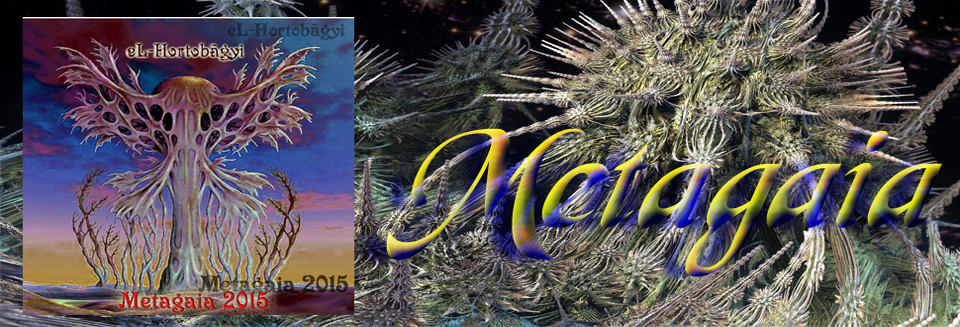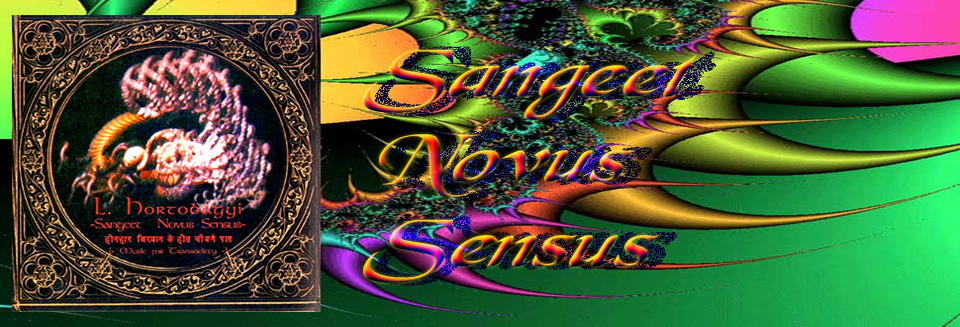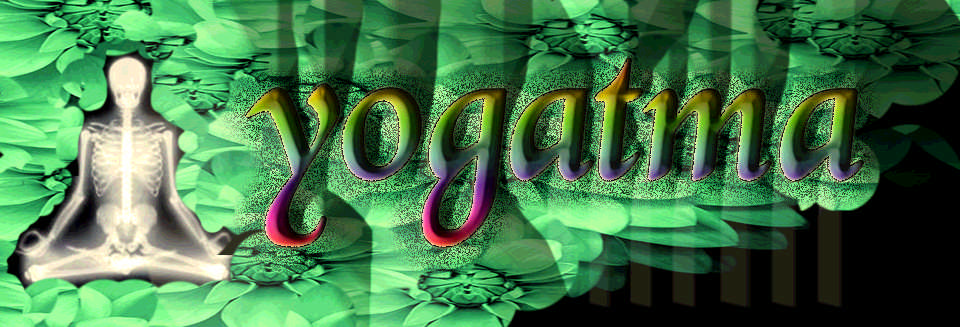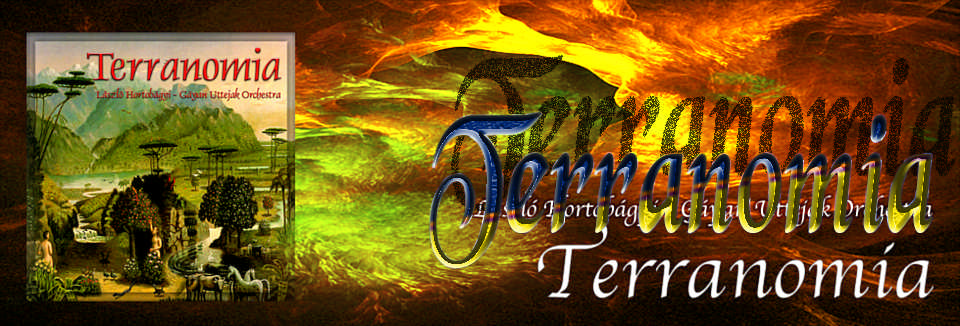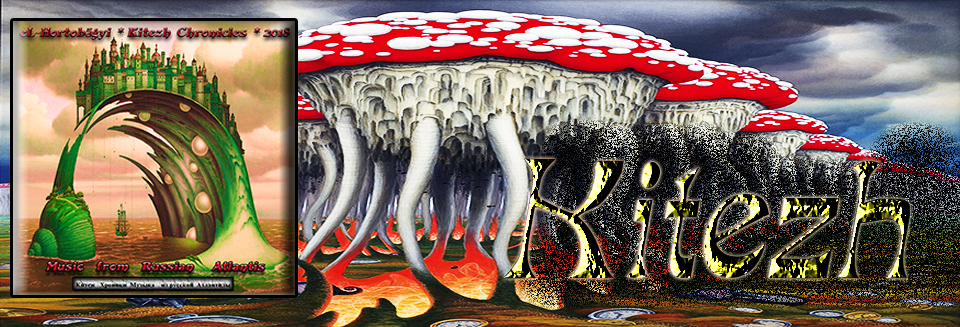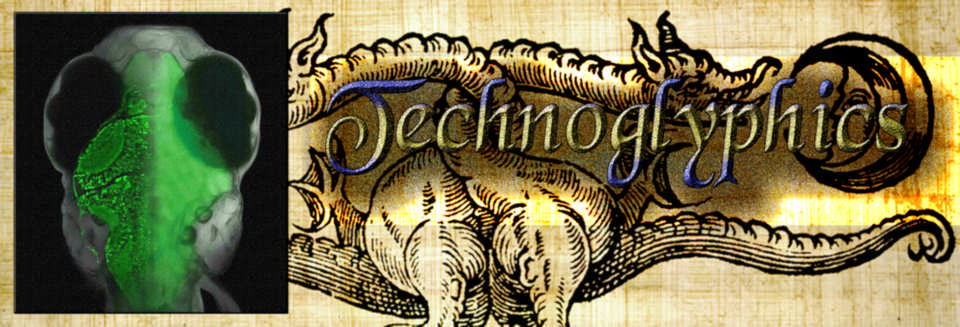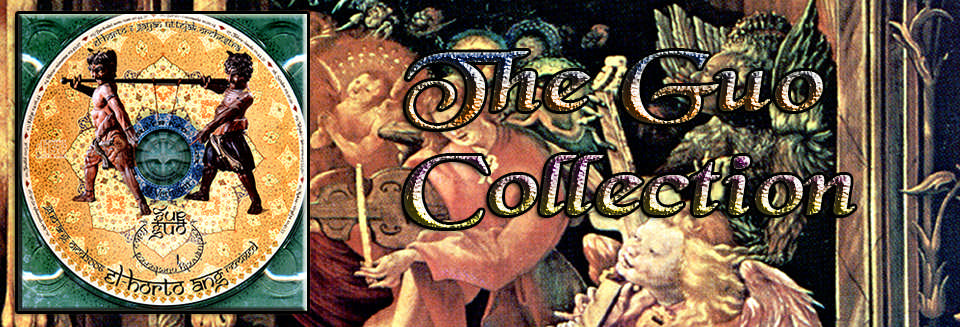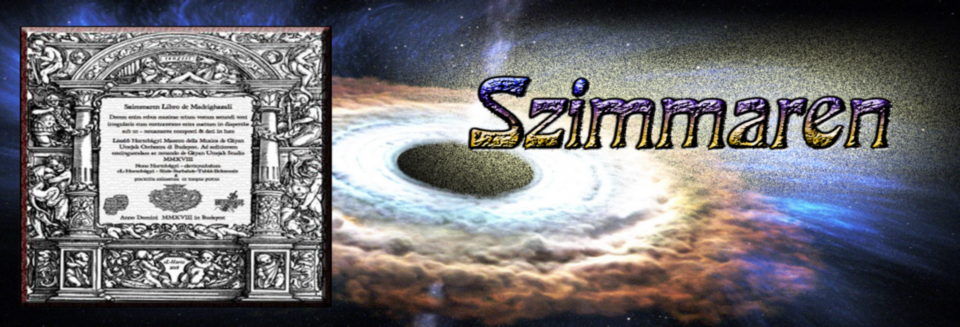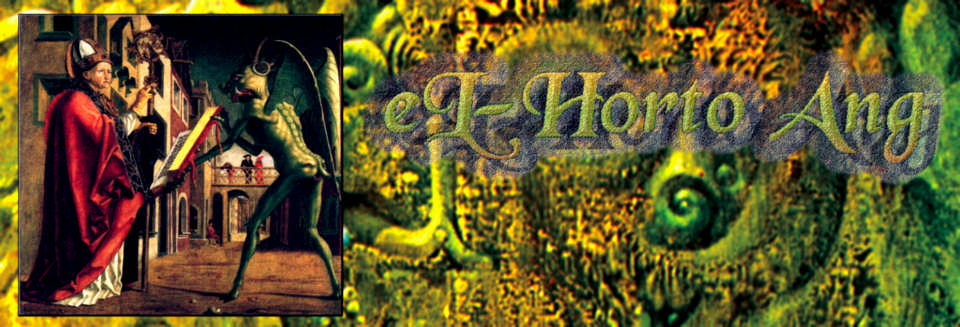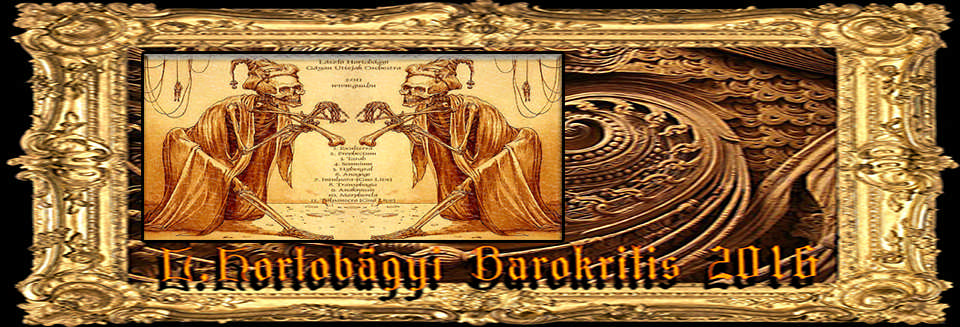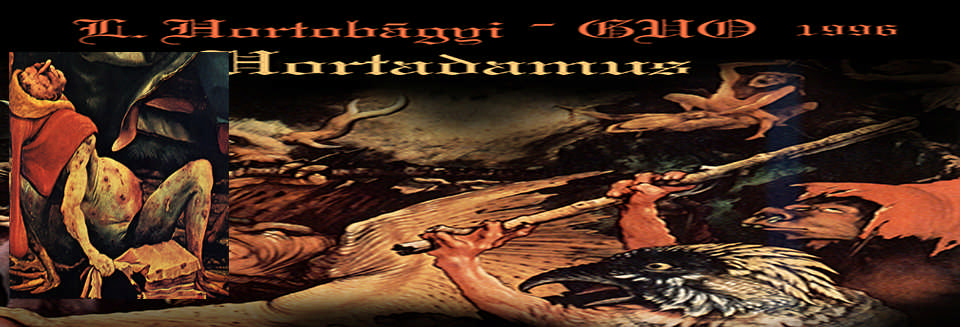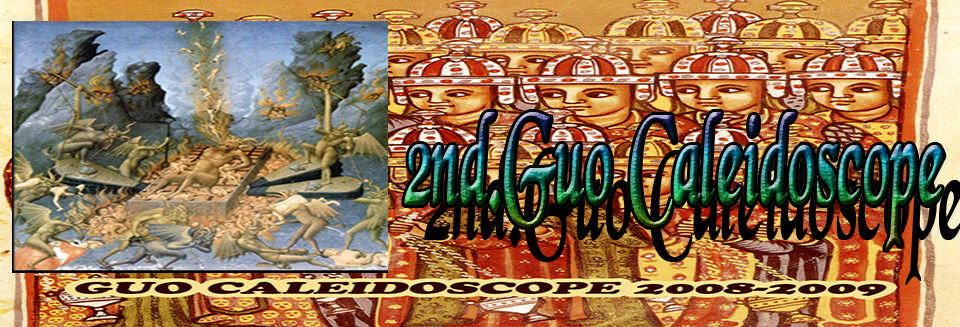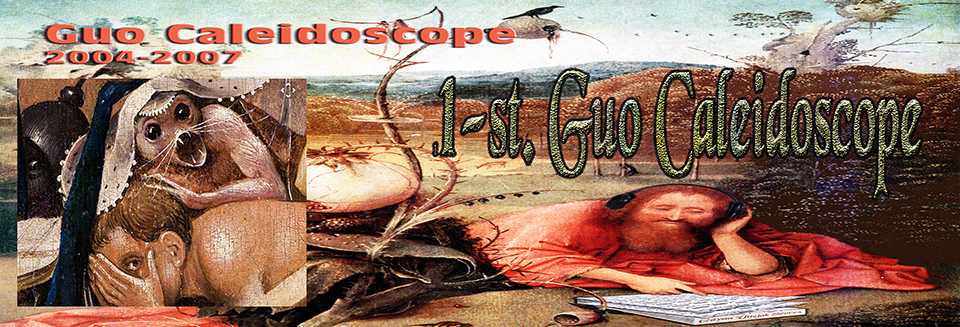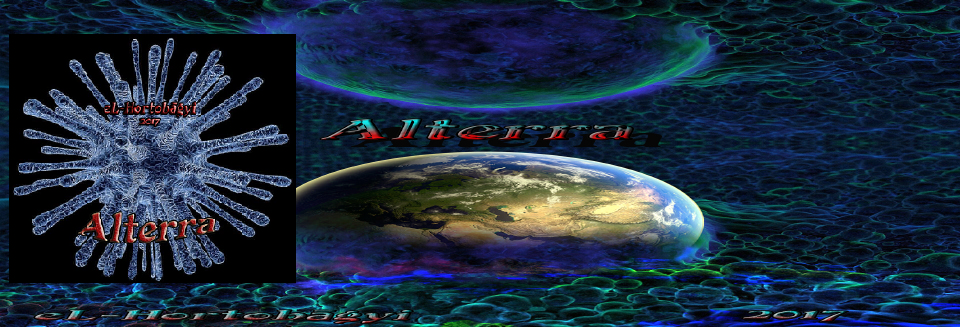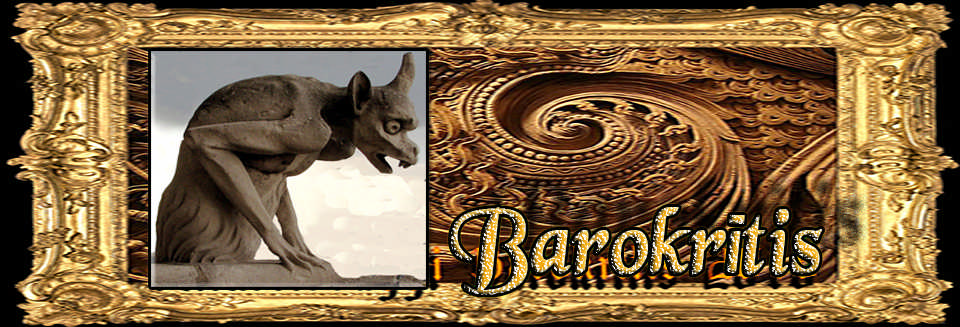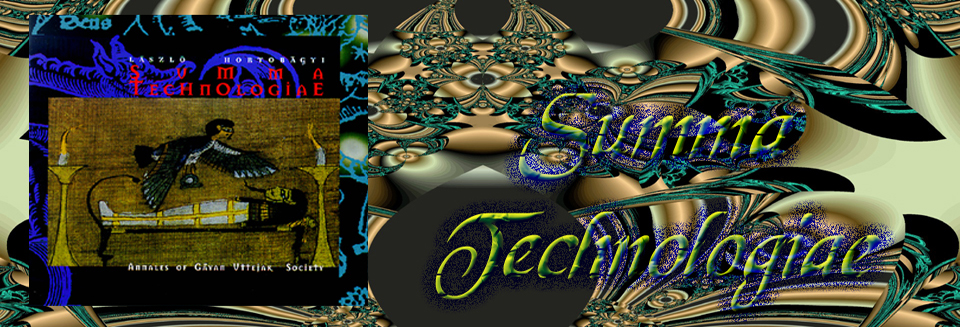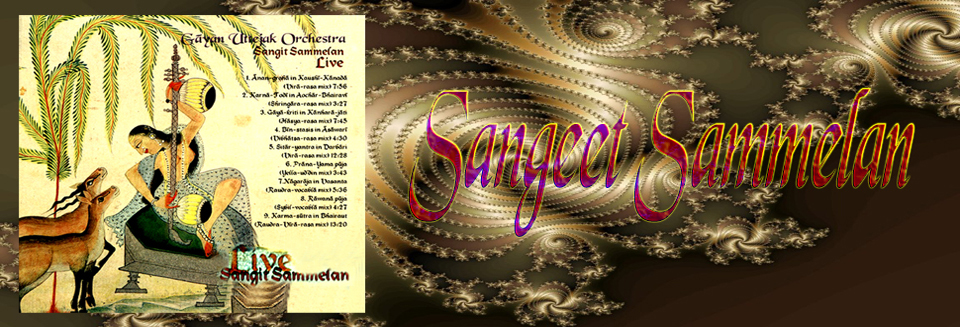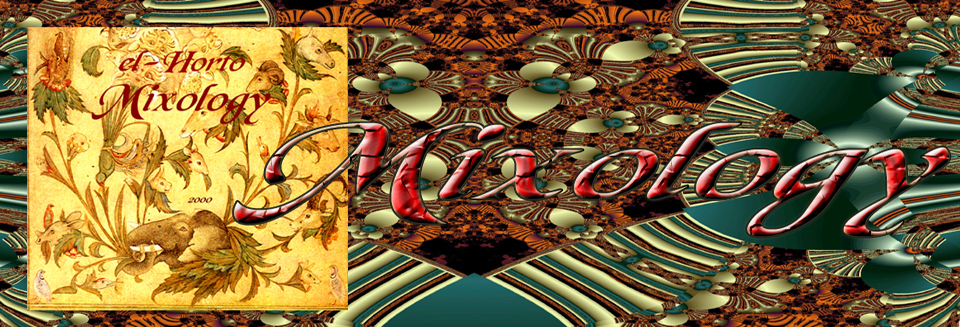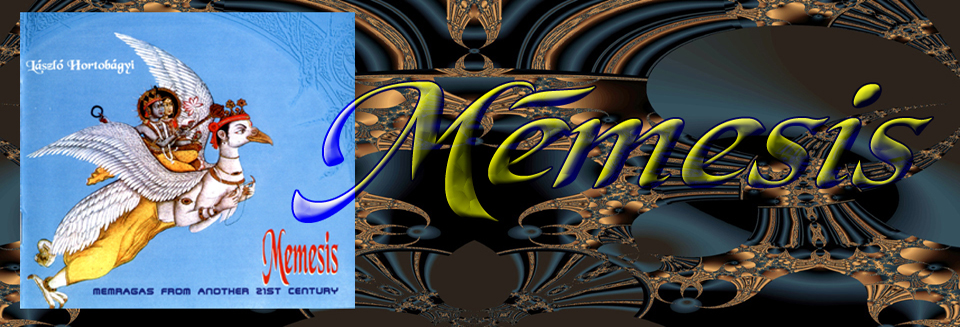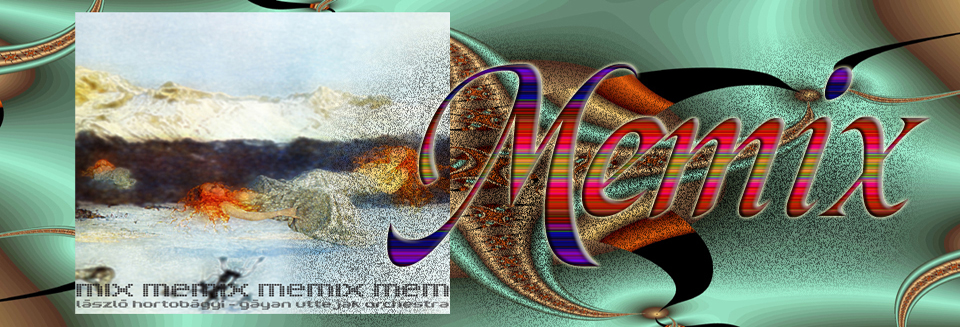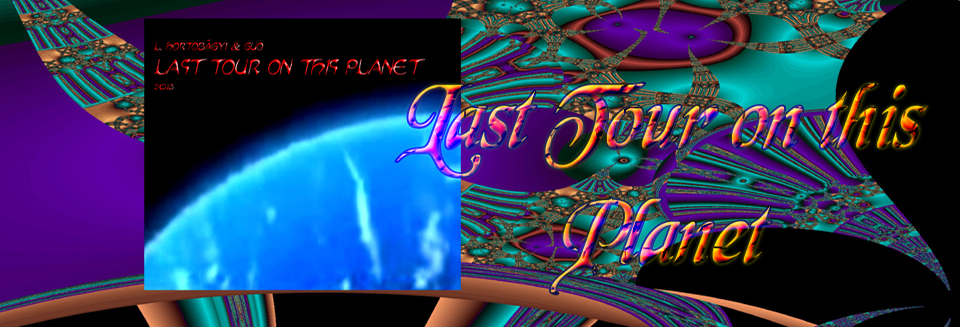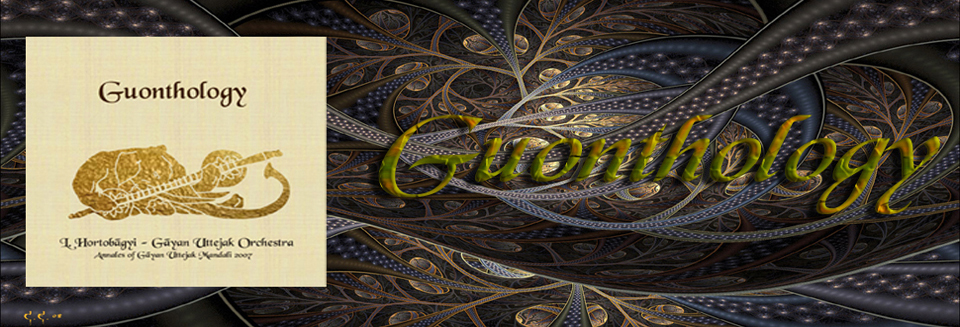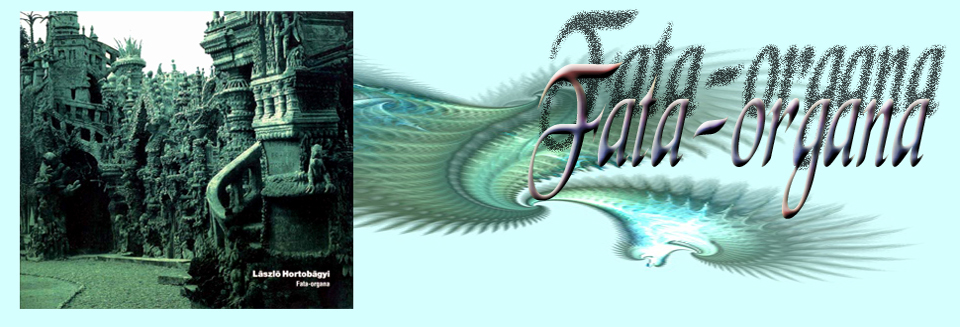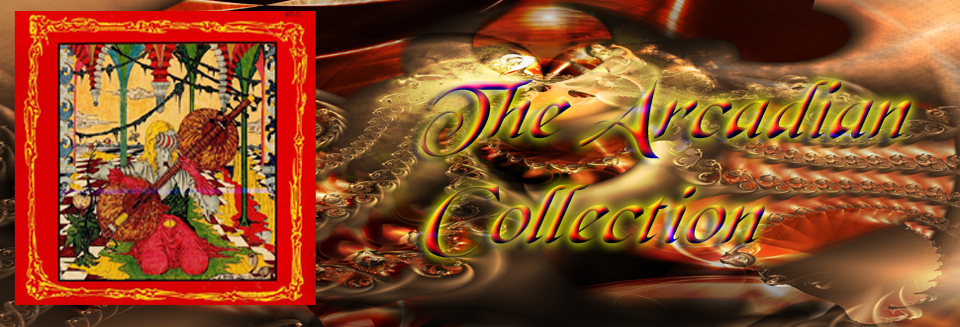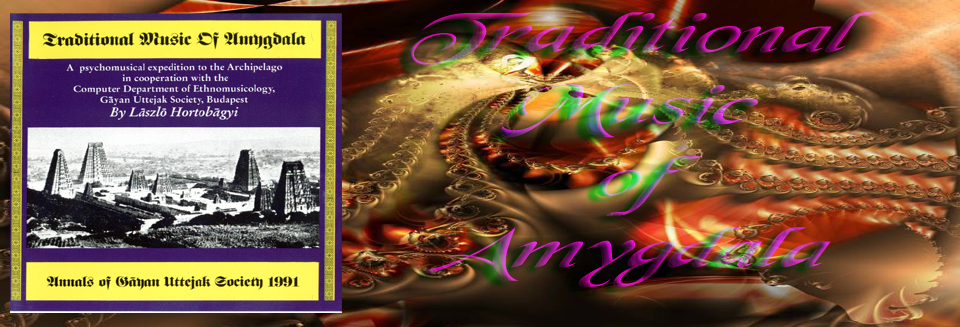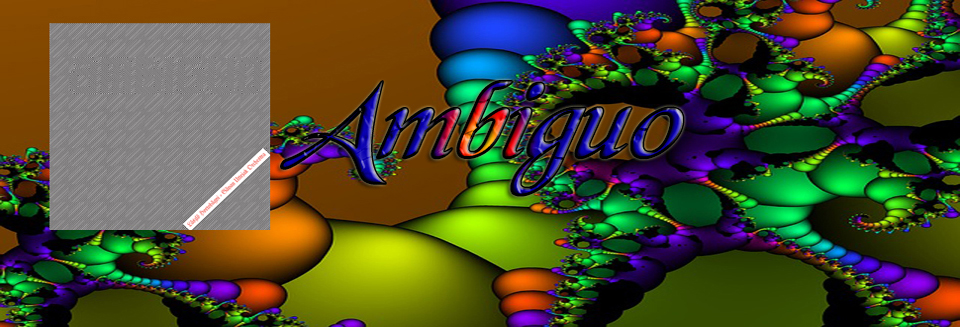The Amygdala Expedition Complete Edition
1989-2024
audio & ordering:
https://amarxe.bandcamp.com/album/the-amygdala-expedition-complete-edition
https://youtu.be/qYE8bV5kYWw
01_Akashāganga (Galaxy of Karma-s) 09:07
02_Bon Lam Khag (Way of Bon) 04:56
03_Land of Xachitaanenh Secwepemc 05:38
04_Fatanagmā 08:20
05_Non serviam 04:23
06_Covideus ex Terra 06:11
07_Thesis of Tinctoris 01:33
08_Sine Qua Non Mantra 02:46
09_Bon Bhairavī 05:04
10_Aporia 06:22
11_Sitārvates Gat 05:52
12_Antim 02:50
Music & Mixes composed on the basis of the local recordings were made at the Gāyan Uttejak Studio, 1989. Budapest
(excerpts from the original musicological report)
“This selection on the music of Amygdala is a desideratum which has not yet been published. Altough several eminent orientalists have endeavoured to penetrate this elegant branch of Amygdala science, scarcely any part of it has been elucidated or rendered familiar to Europeans. It is impossible to convey an accurate idea of music by words or written language; that is, the various degrees of aeuteness or gravity of sounds, together with the precise quantity of the duration of each can not be expressed by common language, so as to be of any use to performers, and as musical characters now in use, which alone can express music in the manner that could be desired, is a modern invention, of course all attempts to define music anterior to the invention of this elegant and concise method must have neccesarily proved abortive.
To be convinced that foreign music, such as we have not been accustomed to, is always repugnant to our taste, till habit reconcile us to it,we need only refer to the sentiments of the several travellers who have recorded their particular feelings on hearing the music of Amygdala with whom they have had but little intercourse. During the earlier ages of Amygdala music was cultivated by desert prophets and men eminent for refined temporalis ecstasy, for whom such general directions and rules for composition sufficed, after a course of musical education acquired from living tutors; indeed, the abhorence of innovation, and veneration for the established hortobāgyi music, which was firmly believed to be of “divine origin”, precluded the necessity of any other; but when, from the theory of music, a defection took place of its practice, and men of learning confined themselves exclusively to the former, while the latter branch was abandoned to the illiterate, all attempts the elucidate music from rules laid down in books, a science incapable of explanation by mere words, became idle.”
[ Source :”Annals and Antiquities of Terra Amygdala ” Vol, IX. Pfcrt. II ].1875. by eL-Hortobāgyi C.I.E., L.L.D, ].
*
01_Akashāganga (Galaxy of Karma-s) 09:07
Recorded at the Kraton of Suryndala Pendopo, Agrahayāna day, 1997.
It is a composition from Borojāva in Amygdala‘s maritime monarchie which is the ritual music of “Anima Enthropia“, performed on the occassion of the His Highness Kanjeng Wadiswarankoil Pangeran Adipati Aryā IX. Mankunegara King‘s funeral.
The rite begins with the traditional Amygdala Sādja (the conventional tuning signal of the musical caste Mohalia Quazian in the southern counties, similary to the 440 Hz the tuning A) which follows the Gamelān Kyai Kanyut Mesem Arkestra (built in Kartasūra Period of Matarām Kingdom, 1680-1745) resp. the entry of Mongolian Hö-mi Heredityn Papae Capella.
Thenceforward the rite is accompanied by the Archelectronic Bass and the Gamelān Gambang Synthware all along.
This grade of the ceremony where the royal cadaver enters into the labyrinth which symbolizes the Eternity accompanied by timing of the church drum (kendang) and sol-fa of the “voice of death” (prāna-Yama-anāhata) in three section form remind the departed and the participants of the procession to the life in that even the future will not be the one it used to be according to the corporeal sensation.
The peristalsis of the labyrinth produces futures again and again in the chain of the reincarnation (samsāra), it is a time gate (samāy darwāzā) at the bottom of that it has been determined in which branch of the Nirvānā galaxis’ corrotation circle will be recreated another possible future.
The uninterrupted striking of the bell (canorus) indicates that the heart of the labyrinth is coming, where the “voice of death“, the bamboo flute (sūling) and the Ars Baroqi Streeng Ansambly bow-handling compose a background music for the royal cadaver’s rolling into the gothic gate of the monater god’s white skeleton throat.
Cangaishwaran Wadivelu Buwāna Said the new king in Borojāva was enthroned by Jaufre Rudel de Blaye’s (troubadour of Provence) Gregorian-antiphony and Abdelahad Aziz Sārqui Hāqq (lord of the greenery grand computer FIQ-007 in Mecca) müezzin’s lamentatio and the new monarch designates by hitting the Great Imperial Gong Agung twice that we have entered, a new era.
*
02_Bon Lam Khag (Way of Bon) 04:56
Recorded in Rumtek day of Navavarāna pūjā, 1998.
It is recording from the closed highland community in the island which presents the evoke of the Trintity Divine Being as it is done on such a high region by the musicians of the sGelugs-pa Order.
The sect which is one of the four traditional formations: Nyingma, Kargyü, Sākhyā, dGelugs-pa, founded by Je Tzong Khapa in Ganden Monastery, 1117, later his disciples splited it into two branches; College Gyütō (rgyud-stod) conducted by Jetzun Kunga Thöndrüp (died 1486) resp. College Gyümā (rgyud-smad) founded by Je Sherab Shenge (1433).
The composition of 12 hours which is originally intelleclual property of Srong-brian Sgampo (A.D.628) is attacca lead up the flute (shakuhachi) player Tokumoichi Nishiyama accompanied also the signal of Sādja then the singers (u-dzay) of the two Orders sitting facing each other personalized aspect of the plural Being; the “death god” – ghos rgyal – or Dharmārāja resp. that of the “Great Black Lord of Transcending Awarenes” (the Holy Bible = “dimly by mirror“) – mGon-po – or Mahākāla.
Female aspect of the Principles, “sexus feminus” – Hla-mo – or Kāli, (embodied in Mahākāla, she is also one of the eight Dharmā protectors) is rended by the well-known artist, Yrch who also accompanies dances (jo-lags bkra-cia) of secular origin as a vocalist.
The permanent presence of Bassi Profundis articulating the OO-OHM mantra, the flabellate drum (rnga), Delayed Transcendental Overtone and the Harmonized Cymbal (rolmō) provide the accompaniment.
Sexus Feminus sūtra is halved by the song-dialogue (sawāb-jawāl) of the shakuhachi and His Holiness Gyawa Karmapa, grand lama of bKa’-b-rgyud-pa Order and now at the intrada of Digital Horns Ambigüa (rkang-gring) the textlet of the song come to the praise of the ethically proper behaviour (sila) and that of the way how to follow on the right “path” (lam).
The singer is accompanied here by the unisono of the violin (pi-wan) and the flute (glin-bu) that can hardly be heard.
By foresinging of the band of Lāma Konchhok Gyalsten (from Sgang-ngong Monastery, Priyang) and the drum and bell (drilbu) strokes the rite will be driven into the mental state of Bodhī thereupon the Trinity Divine Being’s stone face finally cheers crick-crack at the metres of the “voice of death” (prāna-Yama-anāhata) and the Sādhanā b’arok-cpa’s stringed tessitura.
*
03_Land of Xachitaanenh Secwepemc 05:38
From the sixth degree of latitude of Amygdala down, the entire jungle belt is ruled by an old royal family, which was also the southern border of the kingdom. Then, for many kilometres, comes the world of blind white ants who build huge termite cities – everything here is theirdomain. The red ants fight the white ants, who come through the jungle like a great, rushing river. Elephants and all other animals herd together and run away.
The lava flow of the red ants reaches the edge of the jungle, they find the white ants’ strongholds and the battle begins. The red ants mow down the white guards, then enter the white ant cities and never return. The battlefield is littered with the carcasses of giant, warrior termites, crippled specimens that have died. A third of their bodies are covered in horn armour, with a helmet-shaped helmet-plate ending in a branch-bowed scissor, the slender legs and potroh almost overwhelmed by the mass of overgrown armour.
Miles of termite towers cover the whole plain. It’s like a forest, like a dead forest, full of petrified, huge tree trunks, one next to the other, you can barely fit between them. Temperatures above 45 C.
These termite mounds can be up to eight metres high, built of sand and excrement, harder than cemented volcanic mortar and swarming with eyeless, white, soft insects that have lived like this, cut off from the light, for tens of millions of years. According to Amygdala myrmecologists, their invisible underground flesh weighs several times more than the biomass of the humanoid population.
According to Amygdala legend, they came from the Nix constellation through wormholes in time tunnels built by the ancestors who lived there.
The ground is hard everywhere, dull under the feet, covered with a jagged pattern, as if woven from thick cords. Underneath these are the channels in which termites have marched incessantly for millions of years. Built of the same cement as the castles, they stretch far and wide, burrow underground, resurface, branch and intersect.
There, in the middle of the City, among the millions of fossilized termite mounds, teeming with violent, blind life, is a different kind of castle, black and curved like a hook.
There was the heart of the ant people.
The Secwepemc‘s expedition penetrated for days into the City of Termites. In every direction, front and back, two stories high, an endless forest of tight stone mounds, curling grey columns. Inside, this soft, steady, even music plays. The wall shakes day and night and the tunnels are everywhere underground. Once or twice, one of these tunnels burst, with endless rows of huge, bleached insects marching through it. Immediately the horned, helmeted soldiers appeared, cutting blindly with their scissors and firing burning, sticky fluid at the intruders.
They came to the black central termite mansion.
Like a curved finger, it was. Its surface was smooth like polished marble. It was surrounded by low towers and, most strangely, they were not vertical but leaned outwards like puppets frozen in grotesque compliments.
The expedition blew up the central castle after some fuss, the ground shook, but the other termite castles did not collapse. There was no way through the crater of the explosion, for tens of thousands of giant termites in branchy, scalloped armour crawled out of the pit like waves crashing ashore, but stepping back, silently retreating, they made way for the invading expedition.
The air space of the inner halls of the small cathedral-sized cemented ruin was completely woven by an extremely smooth and strong, thin layer of warp. The fine threads of a spider’s web solidified like steel in the light and flashed like razor-sharp blades in the dark.
Inside the central chamber, the desiccated corpses of ten-thousand-year-old bat-winged mummies nailed to the walls, surrounded by a thick layer of breathing termites on the walls, on the floor, everywhere.
Prying one off the wall, a mass of decaying carcass spores, disintegrating like smoke, burned the lungs of those who breathed it in from the inside.
The question is, were they termites at all? They were huge, flat, covered in silver hairs, their eye-less dolphin head shaped snow-white heads terminating in some kind of antennae, and these cilia-like antennae were attached to an opalescent, spherical object.
They were incredibly old insects, motionless, as if made of glass. They made no attempt to defend themselves. Their abdomens throbbed steadily. But when they were torn from that central object, that extraordinary round thing… they perished instantly. They were as dead as a crumbling rag.
They took that object out of the chamber, sealed it in a steel box and took it away from the termite cathedral, but the procession was chased day and night by insects, butterflies, moths, beetles, membrane winged creatures like a droning cloud. But the worst were the ants.
They took that object out of the chamber, sealed it in a steel box and took it away from the termite cathedral, but the procession was chased day and night by insects, butterflies, moths, beetles, membrane winged creatures like a droning cloud. But the worst were the ants.
Wherever the transport stopped for more than an hour, the red ants, stump ants, pharaoh ants, black ants, grey ants, big and small, came streaming to that ball, climbing on the box, covered it in a thick, teeming layer, chewing up, destroying whatever it was wrapped in, choking each other, dying, shooting acid to bite the steel can. ..
(here the surviving expedition diary is interrupted…)
*
04_Fatanagmā 08:20
Recorded in the darbār of Mahārāja Sayyajīrao Gaekwād Serfōji, Uttar Oudh, on the day of Akashwāni, 1997. A recording from one of the Amygdala‘s plain empires with a great historical past which presents the courtly ceremonial (sanskār) of executions of the Adwaita School of Vedānta type, revealing the basic principia (maulik siddhānt) according to this every minute of the life in the empire is regulated by canonical laws of the musical time (mātrā). The ceremony takes place in the mahāraja‘s chapel of great size. The rite begins with the electronic waves of sistrum (āghāta) then the Gregorian epicleses of Coro de Monjes de la Abadīa de Santo Domingo de Silos Abbey (originated from the time of Visigoth Kingdom of Numantia, A.D. 600) calls up the opaline, nacreous Spirit (ātma). Greenery-golden lacertiform dwarfish angels of white wings (dewdūt) with peacock feather legs are flitting in the traditional coreography of Bhārata-Nātyam following the Spirit among the columns while the Spirit’s sighs make a counterpoint to the vocal fragments of the choir which celebrate the addressing and marching of the men condemned to die.
Mandra Gedackt 16′ the organ’s symbolic bass introduces the theme of Padmashri Mohalla Mushtāq H. Yuns Bahādur Khān, dhrūpad vocalist who is sitting in front of the alter and greets the mahārāja – leader of the rite – by his Darbāri rāga. Beatings on the drum of Vedic origin (pakhāwaj sample from the Nana Pansē School of Indore) and the Amygdala Sādja close this part indicating this way to Herolds that they may drag the dopped swampy monster and may lay the victims on the scutellar back of the horrible being. Sacred timing of the rite is controlled by Ustād Moodgalya Dabīr Saha Khān, dāgarvānī dhrūpad singer’s tirade of vocal style (bol-tāna or Nom-Tom) and the orchestral sound of Vādya-Vrinda Ark-Astral resp. by periodical speaking of the “voice of death” (prāna-Yama-anāhata).
The bell (ghantā) strikings are varying according to the period of 16 mātrā – 16/4 – Tintāla, and the 48 mātrā vilambit Ekatāla resp. 2 X 32 mātrā vilambit Tritāla as well. By entering of two tablāiya-s – Ustād Yāqil Aasman Khān and Toufiq Ghanamma Iqbāl – whipping of the participants laid on commences while the sound of Imperial Gong in 7 mātrā – 7/4 – Rūpaka tāla period arranges the series of the deem phased but symmetric phrases of the Tablā-bol-s.
The whole part of this movement is blended in Grecian genius of “chronos protos“, which gives a well-proportioned and sublimated integration of time perception (mātrālaksana) in this collective exaltation, harmonizing the conventional practice of human culture and law and order with the rules of universal time (kāla).
16 + 48 + 64 mātrā-s of bell strikings (on sam) and a traditional cadence (tihāi) of the dhrūpad singer introduce the Great King Period (nagmā or lehra) in 64 mātrā played by Gamelān Kyai Udān Arum in Pelog mode that together with the kāthak compositions (kāthak gat) played by Ustād Aaqil Dawood Khān third tablāiyā, all above determine the quality of whipping.
After 32 mātrā-s time the Gamelān Kenong Gong joins with his own lo mātrā-s – 10/4 – Sulafākhtā tāla period.
This gives an impulse to the Lictors, so that the whipping slowly gets to its final stage where the bol-tāna-s of vocal series symbolizes the executed souls flying high up. The Great King Period’s rotating (together with its A + B portions – vibhāg -) is traditionally regulated, the pūjā generally moves on turbulantly during 4-7 periods. This recording presents a 6 X 16 mātrā Mahāpashtu tāla examples and ends with the singer’s (gāyak) festal cadence (chakradār-tihāi, a period divided into 3 or 9 parts equally).
*
05_Non serviam 04:23
At the end of the last century, in the town of Dawleetoo in the north-east of Amygdala, a computer team formally analysed all available mystical writings recognised by religions:
“Mysticism as a Communication Channel”.
The impetus for the Project was the realisation that every religious person has a Godhole in the depths of his soul, whose Hawking radiation slowly from the community siphons out the soul of its owner.
The project was led by Prof. Sembarnarkovilsdaran Izhernius, the founder of the Biological Quantum Awareness Singularity Foundation in the University City.
The starting point for the research was the belief, as revealed by the churches, that mystics are able to contact God in certain special situations.
Texts that recorded such internal experiences were examined for their information content.
The analysis did not touch on questions of God‘s transcendence or immanent characterization (personality), did not question the content of the accounts of mystical relationships, but took into account only objective quantitative aspects and the descriptions, of the information conveyed by mystics. In this way, the socially usable quantity of the analyzed information could be given with mathematical precision, precisely by completely ignoring its semantic content.
The project is based on the information-theoretic certainty that the creation of a link to a realistic source, i.e. a communication channel, must be accompanied by an increase in the amount of information on the part of the recipient.
From different definitions of God comes the dogma of his infinity, which implies infinite diversity in terms of information. (This is easy to prove formally – the omniscience attributed to God analytically implies this diversity as a continuum.)
The biological being in contact with God cannot, because of the finite duration of his destiny, come into possession of an infinite amount of information, but there must be only a certain increase in information, the limits of which are determined by the perceptive capacity of his consciousness.
To assist in the crossing of the Gates of Perception, a piece of music by an unknown Amydala composer was used in the experiment, which is here called a “subliminal tactical neural implant“.
The summary of the conclusion resulting from the years-long project reads as follows:
„ The amount of information contained in the writings of mystics is exactly the same as the amount of information that can be gleaned from the revelations of people who generate diversity solely from themselves.
The relationship between mysticism and God, which people and churches need, does not manifest itself as a process whereby one acquires more than zero information.
This can either mean that the communication channel needed by the churches is a fiction, or that this channel exists, but the Sender is shrouded in a persistent silence.”
*
06_Covideus ex Terra 06:11
Recorded in the nartex of V. Kopronümos Pogonatos‘s (912-959) temple, 7th. day of Phalgunā month, 1998. The recording is from the insular country’s eastern area shows one of the classical meditative earthquake myths.
The ceremony requires a number of musicians and is held under lhe “Blakherniotissa madonna‘s” portait of orans position in the gathering place (nartex) of the church at full moon every five years, performed in a strictly defined order (akoluthia) required by the traditions, after the hymn (akathistos) intoned by the ecclesiarch (exarcha).
As each of intones (epikhema) the eight’sorts may last 25-30 minutes (“argon melos“=”long song”), so in case of this ritual-type the ison kind of hymns is the usual one which is from the plagioi modus and sung like bagpipe in barüs tonality.
During the ceremony a nostalgic evocation of the ruin of an empire from the ethereal world existing only in the ecclesiatic mythology and in the imagination of the congregation is enacted; as the interpretation it is harmonizes with the alpha-, beta-, theta phases of the meditational praxis, so the different stages of collapse of ancientral culture – largely analyzed in the religious literature – interlink with joyful degrees of enlightement (satori).
After the opening phrase (prooimion) the choir of congregation positioned itself in a tringle starts the record with the tropaion theme accompanied by the flute (shinō–bue) till the initiative part of the classical Gakkaen composition.
Above performance want sixteen musician orchestra organized by the Ono Gagaku Kai Society (founded 1887) and the instruments are as follows:
3 flute – ryūteki
3 oboe – hichirīki
3 mouthorgan – shō
2 lute of four strings – bīwa
2 zither type of 13 strings – kotō
1 little gong – shokū
1 kettle drum – taikō (controlled by the conductor)
To understand the refined signalling system of orgasm of the collapse we refer to “Harmonike eisagoge” by Caudentios (A.D. 200) and Khamtul Kunga Tenzin III. (lama Pal Dhunstok Tashi Jong sect from Ralung Monastery, l6. century) both of them emphasize the connection of the lowness of voice and the closeness of God as their main interest.
The interpretation of the orchestra that can be divided into longer periods is accompanied by the liturgical song of drone voice performed with collective circulation techniques of breathing in the spirit of Okhtoekhos Paraklete (later osmoglassije or oktoih) musical order of ceremony.
Intradas of the rite movements are stimulated by the sound of sistrum (denshō) till the main theme of the Gakkaen composition from the Tang Period (A.D. 618-907) which is one of the three-part dances type called Taiheiral in the traditional music (hogaku).
The composition in the Gagaku (or Yā-Yue) style transfers collective hallucination of the canonical mythology about the sinking spiritual empire where the orchestration appears as one of the sources of religious delight besides the cathartic self-maiming.
The theme – its duration is regulated by the lunation – closes with beating the orchestral bass drum by Cyōsan Hemis Damman grandmaster (from the Shingon sect) thereafter the so called “Pantokrator’s gasp” (zapühānie Pantokratorow) of the ritual as a closing section.
Here the ramling of the heavenly bass sound crashing down periodically thrusts the believers being giddy with loss of blood into the even deeper stupor.
*
07_Thesis of Tinctoris 01:33
Recorded I. Ferdinand Aragoniae‘ funeral, on the loth day of Ashā‘i month, 1997.
A recording from Golconda city-state which is rich in traditions and famous for its musical life.
Parthenogenetic polyphony prevails in the musical life of this region where the rivalries among the constructional style (paraphrase, super – that refers to the presence of cantus firmus, chanson, frottole, later madrigal) for many centuries have led to serious art conflicts. Each of the hereditary voice-constractional types belongs to a certain tonality-caste its canonical (lex phonetica) limits are appointed by the use of tonal system (rāga, nomos, maqām, etc.), range of voice (vocis), the internal part-periode of their measure (anga), and the intelligible text-file formed by sol-fa syllables.
Thus this musical homology of social hierarchy ranks a musician on the base of his caste, determined hereby what type of the sorts of voice he may hit at restricted by this means the artistic forms too in which also male and female kinds of voice can occur granted to the composer.
This principle is evident particulary at very popular funeral rites and burying of living bodies, where composition of the voices prescribes a construction of “solemnity” according to the caste and sex of the actual departed.
Beside the Ordinarium resp. the Proprium Missae also hierarchy of the memorial services and requiems takes shape according to the complexity of the voices involved and the proper social strata of their composers sometimes to the philosophical principles of the scales constructed by the letters in their names, all above are usually performed by a rhythmic accompaniment (vox digitalis pulsatio).
The performance of the voices defined by colours and parts of day is the accomplishment of the further era at the sametime the refined methods of the voice matching – which is feasible by such feature of the cantus firmus like caste, sex, modus, time-measure, parts of the day, colours, emotional behaviour, etc – reinforced the camp of the “constructivist” of music.
The retroaction in the course of history of music in the city-state was one of an aesthetic nature primarily but not that one of composition-technique when the musical requisits began to be subordinated to the astrological scripts coming into prominence for the sake of emphasis of their intellectual content.
In Adrian Petit Coclico‘s study “Compendium Musices“; Nürnberg 1552, (Josquin des Prez‘s pupil, 1440-1521) the new ideal concept of “Musica Reservata” was formulated which is the exact expression of the musical mentality of danse macabre.
In the past there were great “theoretical” composers, Jan Ockeghem (1420-1495), Jacob Obrecht (1430-1505) and members of the “mathematical” line Guillaume Dufay (1400-1474), Gilles Binchois (1400-1460) or Antoine Busnois (died 1492) now we must point out one of the latter ones, Johannes Tinctoris (1436-1511, Cornago‘s and Ycart‘s contemporary) whose theoretical work “Diffinitorium” is a remarkable product of the era besides his other compositions.
On the record (descriptio sonorum) can be heard Kyrie movement of “Missa trium vocum secundi toni irregularis cum contratenore extra manum in diapenthe sub ut“, performed by Capella della Caelestis Vocum Sonitus and the Vox Digitalis Pulsatio orchestra in traditional instrumentation, composed earlier by Johanaes Tinctoris and was interpreted on the occassion of a lord’s death (in his Mediterranean court where J. Tinctoris‘ lived).
The rite and the cremation (incensio) begins with the Cymbalum Sinense Liberator, the fifth male gong hit before the death, then part-singing of the choir is accompanied by a kettle drum the Tympani Infernus’ symmetric bar in Concinnus tāla which is the metre of pradarshinī voice-caste (vox genus) till the end of the movement.
*
08_Sine Qua Non Mantra 02:46
Recorded at the Princedom Festival Pagoda, 13th day of Jeth month, 1997.
One of the oximoronic ballads of the Senufovē community in dominion Ba’Benzele is celebrated at vernal equinox.
At this time – according to the legend and the tribal astrobalum at high noon – the Earth expands its crust for four violines (fungosus conscientia orogenesis); this moment obligates the chief musical director to compose the next year’s new opera which will be released on the same occassion.
The orchestration is determined by the conjuction of the planets (sinhalagna) and the blood-groups of the composer.
Mythological librettos of the opers are interpreted in meters of limited syllabic numbers of the varnavratta, i.e. the shlōka (8 syllables), gāyatri (24 syll.), tristubh (11 syll.), vasanta-tilaka (14 syll.), sārdula-vikridita (19 syll.) and the popular shikharīni (17 syll.).
To memorize the operas’ librettos sometimes that of several thousands lines need a special mnemo-technique “yā-mā-tā-rā-ja-bha-na-sa-la-gam” where the sol-fa order of the meters of restricted syllabic numbers lay down the original succession of textus.
During singing of the arias the emission of ectoplasm get on the prolitic syllables of the poetic meters in mantra-recitativo, its period is 7 dactylus (bhānasa) as rule.
In view of the affairs of slate it is of great importance that the ectoplasm i.e. mantra-materialization what mould of meditation mandala’s species can be assumed to supervision of that a disparate holy order (haruspex) is competent.
Instrumentalists usually from the second or third branch of a family are selected according to the blood-groups which are appears also in the family escutcheon, so that group A is to be considered always the strings, whose B and AB are usually the reeds while that of AB RH positiv means rather a percussionist and the conductor belong to the group 0, who – in case of a faithful representation – directs the orchestra with the scroll of score sitting at the harpsichord.
In course of Sōma Feast in 1997 the “Sōma Pāwana” opera by prof. Thübsteny Gyelek Nawangnamgyal (from Sākhyā sect, AA negative) on is about a topologic transformation of a blank circle through seven veil (māyā) rows that cobwebbed the World.
The two-segment of mantra-recitation rended by Thiruvizhimizhala Enayat Gompa (Shri Vidya cult) singer (sāmagah) in the popular cherarāwademirā mantram style accompanied by the Purcellian orchestra.
This will be succeeded by the traditional plucked play of kora instroment in grade of 3+1+3 measure and the orchestral section will be followed by the Senufovē Tonos Singers and the Digital Semar Pegulingam as a percussion accompaniment in B segment.
*
09_Bon Bhairavī 05:04
Recorded in the pavilion of Rājgiri Venkateshwara Balmuralivarāya, tulaqdār of Tiruvannamalai, 5th day of Ashwīja month, 1998.
Carnā-tacca is situated on the north-southern border of the insular country which is remarkable for its amalgamation of races and cultures.
The musical traditions of this territory are several years old its peculiar tonal and rhythm system still exist in the today’s musical practice.
Basic concept of the above musical theory is considered to be a method of the fundamental tonality (kharaj) and its overtone connections which generate an acoustic system where the selected key-note according to the requirements of the ancient codices and their harmonic relations determine which acoustic system (sonorum ratio mores) a certain school-, form-, style-, rendering of music belong to.
There are several types of the fundamental tone e.g. ādi kharaj (primary sound), anā-hata (it can spiritually be heard), shuddha (clear sound), deshādi (strange sound) etc.
The proclamation of the fundamental note by the holy Founders’ acoustic activity means that every mountainy school (gharānā) can only sing the overtone assortments of the dogmatic acoustic line prescribed by its Order. The selected key-note is usually from 50 Hz to 100 Hz they are classified according to their names (melakarta), classes (jāti) and the way of performance (rasa).
The five overtone classes – diptā, āyata, karunā, mridu, madhya – have developed on the bases of their odd or even and major-minor formant configuration.
The originated overtone harmonics enable untold systems and in spite of their apparent homogenity they are significant differences among them as to musical theory, religion, philosophy and mythology.
To make an exact distinction among them one needs absolute analytic pitch which is one of the main condition of the holy office (brahman). The analytic lama-s are walled in for ten years to get practice on the principle that the absolute pitch perception ēkāgra āhata) is nothing else than active memory (smaranshakti). In case of a choir singing (sankīrtana) quasi polyphonic, chord-like vocal method (gāyaki) can be developed with emphasizing of the formants of fundamental note accentuated by some singers of the group in a monodic way. In our present record that was delivered on an open-air morning divine service (pūjā) of the sovereign the fundamental tone (shuddha kharaj) of 63 Hz has two harmonics one is of 315 Hz the other of 630 Hz which are emphasized so the explantation why we can hear the choral song as a chorded block is as follows:
-
the first formant frequency is the fifth harmonics of the fundamental tone,
-
the second formant frequency can exactly be heard as the double of the first one so it is the tenth harmonics of the fundamental tone,
-
the band with of the formants is not too much so the harmonics 5 and 10 comes conically out of overtone range produced a quasi part-voice.
The formant groups – vādi-samvādi-vivādi – embodies the tonalities of limited overtone set where several type of assymetrical intervals (shruti) perfectly temperated tonality by tonality are used. So division of octave can be of 22 or 24 degrees where a defined rate of intervals belong to every formant and the tonal system of the modus contains series of three interval types within one octave. Vocal phenomenon of the syllables of the choral textus emphatically and modulating by the spiritus haustus’ technique are yielding to the oscillation i.e. the fluctuations of the formants which sometimes help or mute each other on phase principia in case of a choir at an extended rate of participation.
On peculiar rites two kind of vocals scores (bāj) blend with each other (sankīrna ang) when one part of the performers sing formants A+B while the formants C+D of the same fundamental note are rendered by the other section of them which create an especial acoustic euphony of choir however normal religious processes the formant clans concerned in them can be interpreted only.
During the performance the continuous tānpurā-like Amygdala Sādja (dronika) supports the trend of the choir then it replaces with another type of jāti-clan’s formant group at the intrada of the instrumental composition (gat) as the accompaniment of the sitār. The sitār composition belongs to the sampūrna jāti class, is called Bhairavī and the manner of its recital, playing time from 9″ to 12″ and its female morning melancholy in accordance with the spirit of the classical book of musical theory;
Chatvārimshach’hatarāganirupanam furnish a good instance of Pythagorean diatonic completed with G.
The intro section of the composition (aochār ālāp) is rended by L. Hortobāgyi (Gāyan Uttejak Vidyalaya) acoustically adjusting himself to the ritual formants of the religious service then on his return to the kharaj the movement of the rite for percussion instruments – Tāla Vādya Kachhēri – enters.
By this time the sovereign has got himself into the morning state of the holy sickness, he is banging his head on the thorne, howlinging, plucking at his scalp with his mandarin nails while bringing up odorous clouds of petal all around.
The section of percussion instruments is drumming on a two-head drum (mridangam) by Visveshwaram Ānandeshwarena and on a tambourine (khanjīra) by Hiramnārāyan Mudaliar in traditional style of Tāni Āvartam and within the rhythm periods of Ādi and Mishra Chāpu tāla-s. Clicks of the bell and palm indicates the part-periods of tāla-s then the ceremony ends with the conventional rhythm cadence – the korvai.
*
10_Aporia 06:22
In some of Amygdala’s temples, devotees pray in masks to prevent their breath from destroying germs, some wear headgear to protect themselves from the divine irradiation that directly confronts them, while others exercise their religious muscles with serious moral lessons.
One of their tenets is the doctrine of all-salvation , according to which
the supernatural element is an essential “component” of human nature.
The doctrine states that the infinite goodness of the Lord God cannot allow human beings to be condemned to eternal damnation! It declares that eternal damnation would be a frustration of God’s loving plan and a failure of God. Hell – perhaps – exists, but in all probability: it is empty!
Small town on the western mainland of Amygdala, medium sized, late Amygothic temple with authentic coloured lead-glass windows.
Two young organ builders are pottering on the choir loft, accompanied by Uncle Priest.
Late autumn, it is warmer inside than outdoors.
The one meter deep embrasure of the choir loft’s last big lead-glass window – that can be opened at the bottom, as well – is full of 4-5 buckets of buzzing chitin shell-hecatombs of huge flies, while some hundred thousand more are glued flutteringly on the window’s rainbow-surface dispersing the last warmth of the autumn.
Uncle Priest is staring at the vortex, his eyes like two holes pissed into the snow.
Seeing the miserable struggle of these creatures of God he won’t murmur a prayer of pity, his coherence with his universal order and the evolution is unquestionable.
What goes by that goes by.
He won’t open the window – euthanasia – in turn wearing a purple cloak he will bless the organ and its two builders in the name of the noble and religious idea of Everydemption.
It is late autumn.
*
11_Sitārvates Gat 05:52
Recorded in the court of Jāmā Masjīd Mosque, 27th day of Aso month, 1997.
It is courtly concert in Sahaj Mārg style from a vilayet of Mughal empire.
The concerto in the parvis of the Gaudian grand mosque at nightfall is usually the last part of the burnt offering ceremony (āgni pujā) which due to be taken place on the first day of the year; at this stage the Saint of the year (pīr) – now Itimaud Daula – steps on to the stake (jauhar), to redeem by his death the divine distrainor (jagīrdār) who harvests the souls (ātmā).
Until quite recently no subordinate was allowed to participate these performances because of the “electronic of upper race” (ucctar jāti ilektronik) applied there.
Principia of the continuous seclusion which is an attribute of the “etherical caste” is provisionally abandoned by making the ecstatic sovereign visible for the people (darsana) after the concert.
The musicians are positioned towards the religious pole (kilāb) by the ceremony master (mansabdār)’s instructions usually on the prayer place of the mosque (idga) directly below the rostrum (mimbār).
Leading instruments of the voice always feature in-couples which traditionally is named as the “couple bringing forth life” (maithunā) which is represented on the record by Ustād Sādiq Ali Imdād Khān on rūdra-vīnā (cybernoid bass), resp. L. Hortobāgyi on sitār (of Gāyaki-ang).
In addition the original instrument timbre of the cybernoid bass of voice there is another sampled (swarasmaranshakti) sound of low in pitch (mandrā dhwāni) for this occasion only so it has a decompound timbre.
The accompaniment is given by W.M. Garhwāl on hridaya tablā (“drum of heart-beat”) and Shrimati Laksmibāi Mahāll, harmōnium vādak while the singing priest (purohit)’s short fulminating sentences can be heard from the acoustically syntonized confessional niche (mihrāb).
Short theme series of the composition (gat) in Kānhharā modus are combined with Pandit Laxmanrao Waze Bua khāndār-vānī gharānā dhrūpad singer’s variational tirades (murch’hanā bol-tāna) as the polyrhytmic cadences (tihāi) of the tablā and vīnā supervene.
Stamping and dances of the royal elephants (wāhanā) on ashes surrounded the throne (gaddī) which is on the slake sign that presages well for the succesful celebration. In case of an irregular cremation (āsādharan dāh) the angle (firist) rays of temple systhematically butcher them by their poisonous thorns.
Conclusing segment of the trebly repeated (chakradār tihāi) theme and the three-part voice of the sitār-vīnā-gāyak close the formal part of the feast and by opening of the gates the mosque’s parvis becames the scene of the secular rejoicings till morning.
*
12_Antim 02:50
Recorded on the Rite of Doomsday in the oecumenical cathedral of Amygdala, 1998.
No comment.
*
Full GrFx & Booklet Eng.Hun_Download
*
Bonus Trax of the Complete
AUDIO DOWNLOAD = right/left click on Track:
 = save link / audio as:
= save link / audio as:
TraX Audition:
https://amarxe.bandcamp.com/album/the-amygdala-expedition-complete-edition
*
click on pictures link in new tab
Images from old editions:


